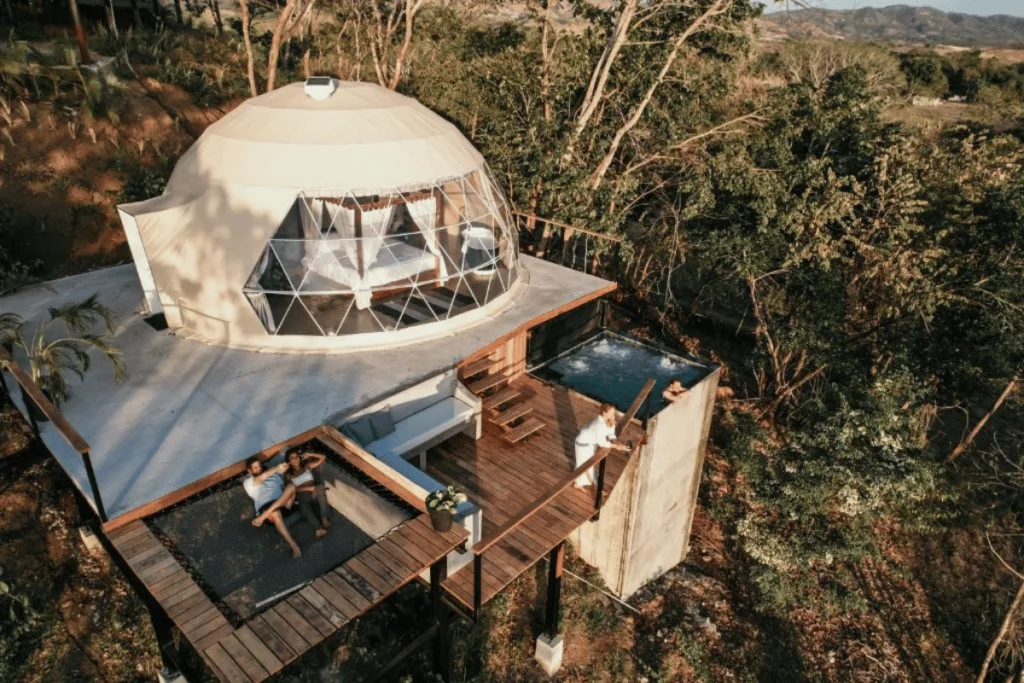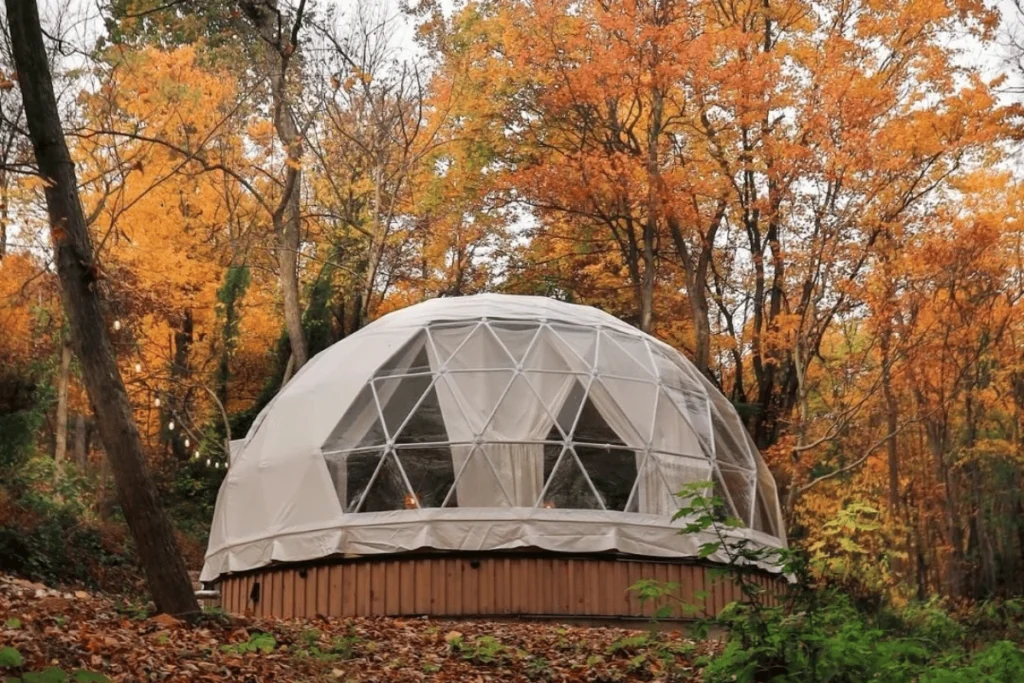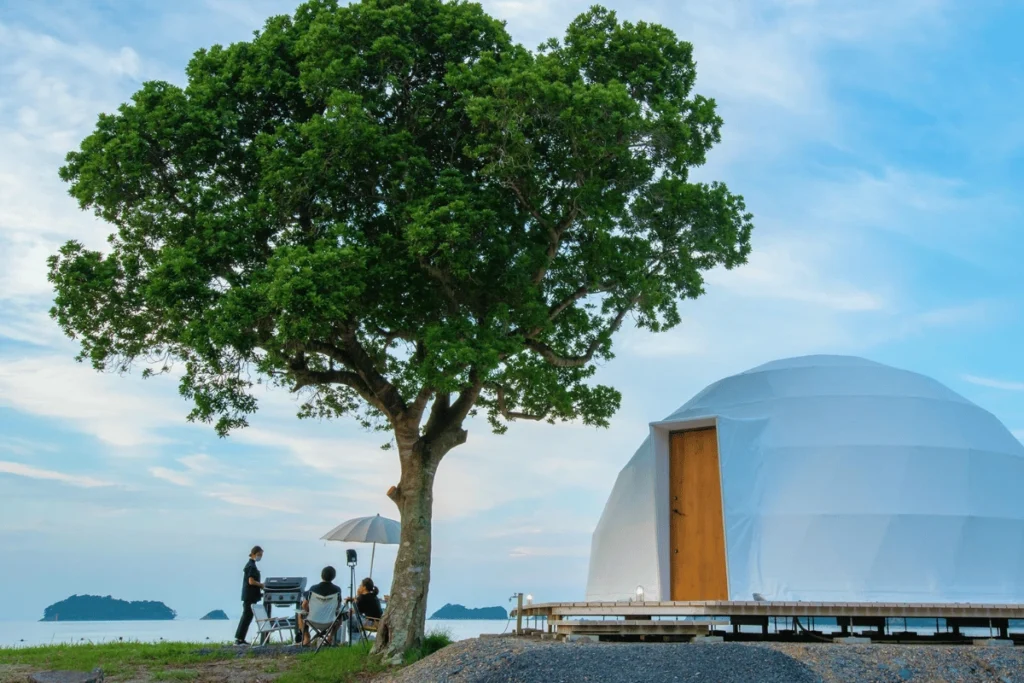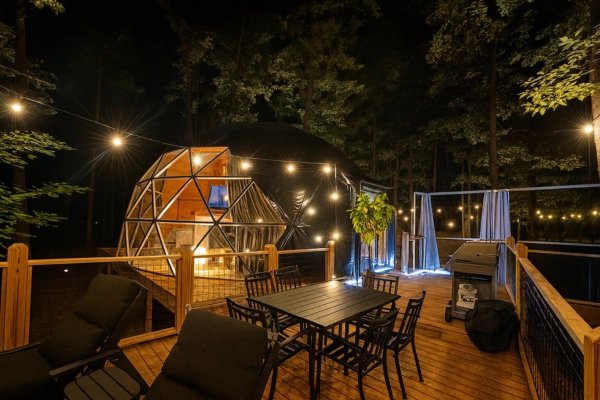
Mastering Glamping Sites Location: Proven Insider Tips
- By dream-domes.com

Location Is More Than Just a Piece of Land
In this industry, choosing a glamping sites is never as simple as picking scenic land. It’s about defining your guest experience, shaping your business model, and setting the foundation for long-term profitability.
Even the most premium Glamping Dome Tent setup can’t compensate for a poor site. As one experienced operator put it: “A good location makes operations twice as effective; a poor one makes them twice as hard.”
Today, instead of vague advice, we’ll walk you through a practical framework for evaluating land. It’s based on real-world experience from building profitable glamping sites—not academic theory.
The Four Pillars of Excellent Glamping Sites Selection
1. Market & Guest Segments: Where Are Your Customers?
Have you considered how far your ideal guest is willing to drive for the right experience?
For instance, a client in Northern Europe originally built in a remote forest hoping to attract luxury honeymooners. Data showed, however, that 75% of bookings came from families within a two-hour drive. By adding family-friendly units, occupancy rates grew by 40%.
Key questions to assess:
- Who are you targeting—families, adventure travelers, or luxury couples?
- What’s the population within a 1.5–3 hour drive (the golden rule of reach)?
- Does the site itself carry “destination value,” or does it depend on nearby attractions?
- How strong is local competition, and can you collaborate with surrounding businesses?
2. Land & Regulations: Can You Legally Operate Here?
This is where many smart investors stumble. Zoning is the first barrier—never assume or rely on verbal promises. You must have written proof that the land allows a campground or glamping operation.
Key considerations:
- Zoning category: agricultural, commercial, or tourism use? Written confirmation is critical.
- Infrastructure: feasibility and cost of water, power, and sewage access.
- Land ownership or lease terms: purchase vs. long-term lease; restrictions in the contract.
- Environmental constraints: Is it within a protected zone, wetland, or forestry red line?
Pro tip: As a Glamping Dome Tent Supplier, we’ve seen domes offer unique advantages here. Minimal ground disturbance means in some regions you can bypass heavy foundation permits—saving both cost and time.

3. Natural Environment & Experience: What Is Your Core Selling Point?
Your landscape is your product. Nature itself is your interior design. How do you evaluate the “experience value” of a plot?
Lakeside/Riverside: Romantic, high-value, but flood and humidity risks must be managed. One Swiss glamping sites solved this with adjustable platforms.
Mountain/Forest: Immersive and premium, but construction and maintenance costs rise. Consider tree spacing, sunlight, and falling rock risks.
Suburban/City Edge: Stable demand and repeat guests, but strong differentiation is required to stand out.
Wilderness/Desert: Unique value, but requires high infrastructure investment and creative operations.
Checklist:
- Scenic value: snow peaks, lakes, forests, starlit skies?
- Micro-climate: wind, sunlight, seasonal risks (floods, droughts, snowfall).
- Privacy: natural vegetation as dividers between units.
- Ecological balance: control of insects or wildlife impact.
4. Accessibility & Infrastructure: How Easy Is It for Guests to Arrive?
The “last ten kilometers” often decide your booking conversion rate.
One Australian site discovered that paving a 3 km gravel road and adding clear signage reduced booking cancellations by 65%.
Key factors:
- Road conditions: Can all vehicles access year-round, or do guests need 4WD?
- Mobile signal & Wi-Fi: today’s “semi-offline” essential.
- Noise pollution: distance from highways or industrial activity.
- Safety: geological hazards, wildfire risk.
- Nearby support: emergency facilities within a 30-minute drive.

From Theory to Practice: Your Action Plan
Knowing is easier than doing. To help you act on this framework, we’ve created a Glamping Site Selection Checklist with 50 evaluation items and scoring criteria. Email us at info@dream-domes.com, with the subject line “Site Checklist,” and we’ll send it directly to you.
Site selection is the foundation of your dream project. We understand you’re not just buying a tent—you’re creating a destination where people reconnect with nature.
As a trusted Glamping Dome Tent Supplier, we’re more than product providers—we’re partners in your success. If you’ve shortlisted land options, share coordinates and photos with us. Our team is happy to give free advice from both a design and construction perspective.
Related Posts


